Trade roads on the banks of the Euphrates… a success journey towards an inclusive identity
The memory of the wheels of the first freight car spins in his mind, the rumbling sound of that car come back to his ears years after the first car headed east, carrying the goods of the Euphrates from one bank to the other, in Mohammad’s first trading attempts, when he decided to start transferring some agricultural crops from the city of Tal Abiad, in Raqqa province, towards his hometown, Qamishli.
“I believed in creating a common economic life including commercial exchange that provides opportunities in life”, says the Kurdish trader, Mohammad Eidan, while he goes back in memory to the time when he began working with Arab farmers and traders in the city of Tal Abiad to establish a stable trade that was actually rising, benefitting from the huge agricultural variety in the area surrounding the Euphrates River, which paved the way for traders to promote integration in the one region.
In his interview with Enab Baladi, Eidan adds; “the agricultural nature imposed by the region of Jazeera, that is the existence of the Euphrates River, encouraged us to have a joint business in order to provide our basic needs,” something that promoted the value of the commercial work in the region and linked it to a set of noble goals, starting with financial gain, to supporting the region economically and providing its needs, not to mention being an important image of relations’ cohesion among all the components of the region.”
The agricultural nature imposed by the region of Jazeera, that is the existence of the Euphrates River, encouraged us to have a joint business in order to provide our basic needs
The region of Jazeera and all the lands surrounding the Euphrates River are considered the most fertile area in Syria, and the most diverse ones in agricultural crops. Hasaka province is famous for being the food basket of the country. According to official statistics, 30% of the total area of the province is cultivated lands.
The commercial role of the region is connected to its geographical location, as it extends on the borders of the Syrian lands with Iraq and Turkey, something that supports the exchange and imposes establishing a commercial unity that represents an inclusive identity of Al Jazeera. The location of the region pushed Arab and Kurdish traders to create a joint economic atmosphere that help them to secure the success of their joint commercial projects.
Business operations in the region of Syrian Jazeera were not limited to daily sale and purchase operations, as it was crucial to find a mechanism that facilitate the transferring and export among the areas, which involved many drivers, whether Arabs or Kurdish, to participate in these operations to facilitate the transfer and distribution to all the different areas of the Syrian Jazeera. Mohammad asserted what has been said; “most of the drivers, partners and those dealing with me in my business were Arab traders.”
Mohammad points out that the agricultural crops produced by the lands owned by Kurdish and Arab farmers need a way to be exported. The fact that Jazeera lacks maritime access to sell agricultural and commercial products forced Arab and Kurdish traders to form an economic structure of drivers (Arabs and Kurds) to contribute in the sale of their agricultural products, as Mohammad put it.
Traders at Al Jazeera region exchange large amounts of agricultural products, such as wheat, flour and fertilizers, not to mention the daily exchange of food products between the cities of Qamishli and Hasaka, considered to be number one in supplying many products like; cumin, lentil, broad beans, wheat and barley.
Despite the repeated attempts pursued by the Syrian regime over six decades to separate Arabs and Kurds, Mohammad believes that it is hard to do so in all of the joint life matters relating to them, “There would not have been life in the province of Hasaka, and the rest of the Syrian Jazeera provinces, was it not for this joint life.”
Due to the security tension, the economic life in the region of Jazeera has been affected during the past five years. Not to mention the siege imposed on the province of Hasaka, as a result of the control of the “Islamic State” organization over the lands extending to the west and south of the Syrian Jazeera, as well as the closure of the Turkish borders to the north and the Iraqi borders to the east.
All of the cruel political and military circumstances of siege and suffocation imposed during the past five years in Syria, which spread to include the region of the Syrian Jazeera which in fact was mostly targeted by all kinds of economical siege and absence of raw materials, pushed Mohammad to continue his trading with many Arab components and gave him more ambition to have further trading operations with the other provinces.
Trading in the region of the Syrian Jazeera
Over the past five years, most of the life aspects in Syria have been negatively affected due to the ongoing war, whose aftermath is still affecting the different economic sectors for many areas and cities. Investment opportunities in most sectors have dropped, especially in the region of Jazeera that first and foremost depend on agriculture, dispersing the economic feasibility of all projects and exchange among the components of the region.
The region of Jazeera is considered the main resource of wheat and barley in Syria, the food basket of the country. The residing components of Kurds and Arabs, whether Muslims and Christians, living in Jazeera seek self-sufficiency that would provide them of their daily needs of food, raw materials and all supplies.
Chairperson of economy and trade in the province of Hasaka, Jamal Hamo, explains to Enab Baladi “the simple trading exchange taking place in the Jazeera region falls within the daily needs field, thus the region of Jazeera is considered the food basket for Syria. In the countryside they plant all kinds of grains, legumes, vegetables and cotton that meet the needs of the local market, as for the spare products, they go to the Syrian provinces, in addition to raising cattle that meet the daily needs of the consuming market of meat and dairy farming.”
“Simalka” crossing…the lifeblood of the region of Jazeera
Simalka crossing, located on the Euphrates River, which connects the Jazeera region to the region of Iraqi Kurdistan, is considered the main link for commercial exchange between the areas of Syrian Jazeera and the Kurdish region. The aftermath destruction caused by the war in Syria, and the misfortunes of the province of Hasaka and the surrounding cities suffering siege by the “State” organization, made “Simalka” crossing a main passage for export and import operations between the two sides, in a way that provides the necessities of life for the residents of the sieged area, in addition to transferring the injured to receive necessary treatment.
Jamal Hamo points out “the Jazeera region relies on the products coming through Simalka crossing (located between Iraqi Kurdistan region and Rojava) from Kurdistan region, but they are considered relief products and are not official.”
The bridge played a vital role since the very beginning of its opening and that is by pumping basic living materials, like fuels and flour, towards the areas in need. Many injured were transferred through the crossing to receive treatment in the region of Kurdistan, students enrolled in its universities, not to mention that many people went there to look for better life opportunities since the region enjoyed security and stability.
Villages of “Ertewasye” and “Mabrokah”… Commercial exchange forced by siege
“Mabrokah” is a strategic point linking the province of Hasaka to those of Raqqa and Aleppo. The traders of the region transfer their products through the village into the region.
“Mabrokah” used to be under the control of the “Islamic State” organization, before the “Kurdish” people protect units controlled it.
To go through Jazeera region to Raqqa, Aleppo, Damascus and the coast, you start off the village “Abo Shakhat”, five kilometers to the west of Mabrokah, and vice versa.
Mabrokah has become the main trading market that the residents of the Syrian Jazeera rely on to transfer their products and import raw materials needed in the area.
As for the village of “Ertewasye”, to the west of the city of Ras al-Ain (Sri Canet) and east of the Raqqa province, it represented a neutral point off the ongoing battles, and a “black market” has been established in there. Trucks and small vehicles download their products in Ertewasye, since it is a commercial place controlled by traders, in order to sell the basic materials of products, in addition, it has become a market for selling derivatives of Oil in the region of Jazeera.
War dealers control trading roads in Jazeera
Old historical ties crystalized in intermarriage cases between Arabs and Kurds, and these ties are not easy to break up
As various forces exist on Syrian lands that seek sources and means of profit for their own sake, this fact was positively reflected, contrary to predictions, on the residents of Hasaka province, for the party that provided products from the other side, which contributed in reviving products’ movement in all of Syria, and were able to cross the borders on the condition of paying money to pass through crossing points between the conflicting parties and on the highways.
Each party legislated their bid to get money in return to enter agricultural crops and products from the other party to their lands or just passing them through as “transit”; the Self-Management in Hasaka named the money they get from convoys with ‘customs’, while the “State” organization named it “Zakat”, and the regime openly called it bribery. By this agreement, the products circulated all of Syria. The Syrians leading this operation participated in providing materials and products across the country. This process led to the creation of a new class of businessmen benefiting from this situation, after the well-known elite ones (businessmen) have migrated. This new created class bear the economic costs of the process of passing products to the different areas, and eventually have citizens pay for these costs through the cost price of the agricultural and industrial product, which led to a significant rise in prices, and inflation rates went up to about 500%.
After five years of war…
How do the residents of Jazeera evaluate the trading relations between Arabs and Kurds?
Trading relations in communities of different components are connected to the existence of a fertile ground that forms the basic material for exchange, and imposes a form of integration within the one region, considering that securing life’s necessities is the higher interest, regardless of any interactions that may be associated with different affiliations, adopted directions or even nationalities, to automatically become a means of integration that has larger dimensions and imposes a united identity over time.
The Syrian Jazeera represents an important example of the impact of agricultural – trading integration in imposing an atmosphere of general coexistence within the villages, towns and the cities, based on the coexistence over a land that produces various crops that are watered from the same water. This fact prevented the isolation and separation case between Arab and Kurdish villages, since there was a network of trading relations, which was in turn reflected on the linguistic exchange among the people of all components, not to mention that it encouraged the expansion of social relations from merely economic interests to intermarriage and neighborliness.
Despite the separation cases between Arabs and Kurds in Jazeera, which the Syrian regime tried to dedicate in different aspects of life, however, the unity of the land was always an obstacle in the face of isolation and prevented the attempts aiming at disconnecting relations of solid roots.
Enab Baladi’s correspondent wandered the streets of the cities of Hasaka and Qamishli and surveyed the views of the Arab and Kurd residents about the importance of the trading relations between the two parties. The majority of the views asserted a positive continuity of the historical economic relations, while others thought that the security circumstances and the political differences led to a “setback” in the trading movement that reached a “recession” level.
Hammad Balash, a Kurdish trader from the city of Qamishli, stressed that the ongoing trading operations between Arabs and Kurds are a positive indicator from both sides. He believes that these relations have not been affected since its beginning till now, considering that the circumstances the Jazeera have been through in the past years only made those relations more coherent.
Abu Yousef, a bags trader for 40 years who works in Al Jamee Street in the city of Qamishli, believes that the war circumstances experienced by the Syrian Jazeera have not affected the “ongoing” social relations between Arabs, Kurds and Christians, since they are “old historical ties crystalized in intermarriage cases between people of both components and these ties are not easy to break up.”
On the other hand, Ibrahim Souliman, food trader from the city of Qamishli, believed that the trading dealings have been negatively affected over the past five years, yet the decline size seemed small “considering the history of the trading exchange related to a united conviction of the importance of co-existence.”
Young Ahmad Shawish, of the city of Hasaka, attributes the “small decline” in the economic relations between Kurds and Arabs to the security confusion during the past time, pointing that the trading movement is recovering based on the necessity of providing food and essential supplies due to the circumstances imposed on all the cities and provinces of the Syrian Jazeera.
The negative effect that seemed “small” to each of Souliman and Shawish, was actually seen as more than just a decline in the trading exchange for Khaled Shiekhi, the owner of an exchange shop in the city of Qamishli, pointing out to the recent decline of trading between the people of the two nationalisms, as a result of the absence of trust between them, creating an economic recession state in the region.
Mohammad As-Saleh, a resident of Qamishli city, noted to the existence of some cases of trading monopoly, regarding certain kinds of products, by Kurdish and Arab traders in the region of Syrian Jazeera, the thing that enhanced the effect of economic decline and reduced the volume of daily exchanges.
However, Marouf Mahmoud Al Hussein, a resident of Qamishli city, finds the siege imposed on the province of Hasaka rather promoted the trading dealings between Kurds and Arabs, and created new partnerships relating to selling, purchasing, exporting and importing all goods and materials needed in the region.
How did the economic and agricultural life seemed like historically in the Syrian Jazeera?
Ironically, the Syrian Jazeera that was for decades an attraction for internal migration due to the agricultural revolution during the forties and fifties of the past century, has become repulsive for its own residents during the following decades.
We briefly review some glimpses/profiles of the reconstruction of Jazeera and the economic activity in it since the emergence of the Syrian state till the reign of Baath through the book “the modern historical formation of the Syrian Jazeera” by Prof. Jamal Barout.
France’s miracle: the reconstruction of Jazeera
The reconstruction process of Jazeera was a French “miracle”, as it was the first systematic, organized and persistent operation taking place in Khabour area nearly six centuries ago. The first and second reconstruction Ottoman programs failed in reconstructing the Jazeera, so the population rose from a few thousands residing in some rural communities before the French occupation, to more than a hundred thousand people in the “official” national estimations, or to around 158550 persons in 1936, according to field estimations by the French intelligence.
After controlling Jazeera, mandate authorities followed a policy of encouraging agricultural production, and establishing villages through expanding agricultural holdings by seizure policy in 1926. In 1926, the government exempted “every migrant, refugee or domicile in the area of Kasabet Al-Hasje in Deir Ez-Zour who has established a house, shop or any other building on the State’s lands located within the Kasaba’s borders, whether it be with an official permission by the government or not, of paying an allowance and the annual revenues incurred on the construction lands, and gave him the right of disposing for free,” and priority was given to domicile then to migrants residing in Kasabah, if they have acquired Syrian nationality.
Urbanization and smuggling
The villages of the Jazeera province were naturally thriving due to the abundant rain and the moderate climate that led to the success of two seasons out of three, especially that of wheat. These villages also benefited from the unprecedented growth of the trading movement, represented in “smuggling” especially that of wool, margarine, grains, sugar, rice, dates, as well as molasses between Jazeera, Turkey and Iraq. Therefore, these villages were the most prosperous, developed and civilized in terms of their wide sources of income or the total local production. The villages have caused tremendous losses to Turkey’s economy, whose newspapers launched a campaign against smuggling, which made the country strengthen their campaigns against smugglers and increase security over their borders. However, the capital accumulated of smuggling was re-invested in agriculture.
All of this development would not have been able to achieve dazzling and early success of urbanized policies, has it not been accompanied by establishing alternative “urban” regional centers. Building the cities of Hasaka and Qamishli represented this alternative, in a way that Hasaka would replace Mardin, and Qamishli would replace Nusaybeen. So that Hasaka would head towards each of Mosul, Deir Ez-Zour, then Aleppo, while Qamishli would head towards Aleppo because of the railway line.
Town centers, village and steppe surroundings
The cities and towns emerging during the migration process from the north of the railway line in Turkey to its south in Syria were mainly Christian, Armenian and Jewish, the Arab Muslims in those cities were descended from other Syrian cities not from local Bedouin origins, or heads of local tribes, while the stable countryside was mainly Kurdish, and the steppes were Arabian including Arab nomads and semi-urban. Thus the relation between the new cities, the surrounding Kurdish countryside and the Kurdish and Arab rural agricultural surrounding started to acquire some qualities of the relations between the emerging urban centers and its surroundings.
The level of the relation between the center of Hasaka city and its surrounding is exemplified in the growth of the trading relation between the production of Jaboor (an Arab tribe) of margarine and wool, and the traders of Hasaka markets controlled by Christians and Jews, as well as the relation between their followers “Sharabeen”, who used to work in agriculture and sheep raising for the account of leaders of important Arab tribes and the market’s traders.
The agricultural revolution in Jazeera”: “the Syrian California”
The wheat policy followed by the British Mission “Spears” in Syria between 1941-1944, achieved impressive success, as the space of cultivated lands in Syria expanded from around 1.75 million hectors to 2.3 million hectors in 1945. Syria became an export country of grains, after being a complete import country.
The British Spears mission that came to Syria between 1941– 1944, has lasting effects till the end of the forties. The mission encouraged expanding the reclamation of agricultural lands and planting wheat for many reasons, most notably to solve the scarcity problem of wheat. The British project emerged to establish a nucleus of a regional institution based on self-sufficiency, of grains in particular, and the necessary products for the British army in general.
The Syrian Jazeera was one of the priorities of the Mission to plant wheat and grains. Experts of the Mission spent huge efforts to convince the Bedouin elders in Jazeera to plant the lands they owned with new seeds instead of their bad local harvest. The mission benefited from the drought decline to encourage Arab and Kurdish tribes’ leaders in Jazeera and the Euphrates to directly increase wheat production. Those were significant landlords, some other elders and Kurd Agha were found in there, whom Turkey originally decided to move to the west of Anatolian as a shelter for them, but who preferred to stay in Jazeera for stability and security in Syria in general and in Jazeera in particular. In this way, those who possessed some relatively large savings participated in converting their savings into agricultural investments, which accelerated the growth of rural and urban life.
At a general level, this policy achieved impressive successes, as the space of cultivated lands in Syria expanded from around 1.75 million hectors to 2.3 million hectors in 1945. Syria became an export country of grains, after being a complete import country.
Asfar and Najjar Company
The roots of this family business goes back to beginning of the thirties, when they moved their savings and capitals from Diyarbakir to Damascus and began to produce rice. But their true development started at the beginnings of the forties within the framework of the “Spears” Mission of expansion in agricultural reclamation. In 1942 the company was founded as a partnership between them and “Bashat”, i.e. the sons of Ibrahim Basha Milli, and the leaders of Milli tribes (the notable Kurdish tribes in Jazeera), to invest 300 thousand hectors of the lands owned by them.
Asfar and Najjar Company soon became the largest real estate company in Jazeera. Farmers of Jazeera bought thousands of donums from the company to plant them. The company divided the arable lands into squares, each square equals 16 thousand donums rented by farmers coming mostly from the Syrian Jazeera.
The “white gold” revolution
The main crop in Jazeera was wheat till 1950. However, the increase of the global demand for cotton, with the outbreak of Korean War, made cotton the basic crop in Jazeera. In 1954, the production rate approached that in the United States. Asfar and Najjar Company was the major leader in the irrigation process by ‘lifting’, using pumps that enabled lifting the water from the low basin of the Euphrates in order to water very large areas. Therefore, the cotton production flourished by all its means of cultivation, financing, transferring, categorization and marketing, hundreds of city traders and industry men invested in Jazeera and the Euphrates. Many migrants of the early Assyrians and elder Kurds residing historically in Jazeera before the establishment of the Syrian state, became farmers of middle and senior levels.
The anonymous joint stock corporation for agricultural machinery
The expansion in the cultivation of cotton and grains was accompanied by another expansion and that was the trade of tractors, their maintenance and everything relating to them. Therefore, private sectors’ initiatives emerged, which constituted of around five large companies to import agricultural machinery, among which was the anonymous joint stock corporation for agricultural machinery, constituted in Qamishli by 17 farmers from Jazeera in 1953, the most prominent founders were Assyrians, as well as leaders of Kurdish and Arab tribes, who turned into agriculture capitalists at the stage of capitalizing the agriculture and directing the production to the global market.
Nationalism and chronic drought
In 1958, the Unity State nationalized the large companies, including Asfar and Najjar Company. The State also seized large areas of lands belonging to important landlords, claiming the distribution of these lands to farmers, which did not happen due to the secession in 1961 and abolition of Kuzbari government to the nationalization decision, which resulted in a great injustice against the farmer, who has been deprived of his rights by the state and technically forced to flee to the inner cities of Syria. All of the mentioned was accompanied by years of repeated drought on the Jazeera, as well as a decline of the global demand for cotton and grains, making the province of Hasaka one of the most repelling provinces for its residents, after being, for two or three decades, the most attractive Syrian province for internal migration due to the agrarian revolution.
This file is prepared by Enab Baladi newspaper collaboration with Radio Arta FM
if you think the article contain wrong information or you have additional details Send Correction
النسخة العربية من المقال
-
Follow us :
Most viewed
- Syrian government launches electronic visa for entry: What's the purpose?
- Tehran pressures for debt collection; Assad unable to pay
- Including suicide types, Drones fill the skies of northern Syria
- Al-Jolani's brother stirs controversy in Idlib
- A billion euros is not enough, Lebanon wants more out of refugee file











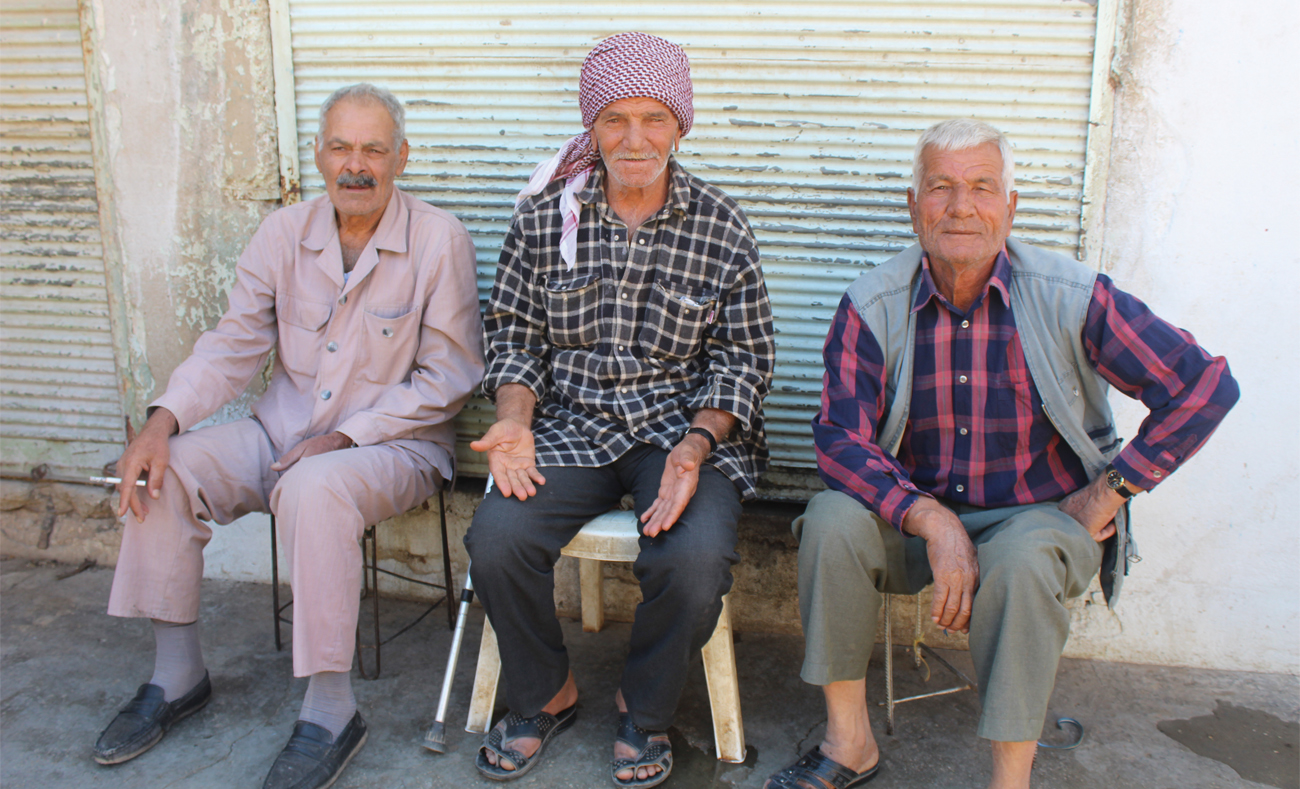






 A
A
A
A
A
A

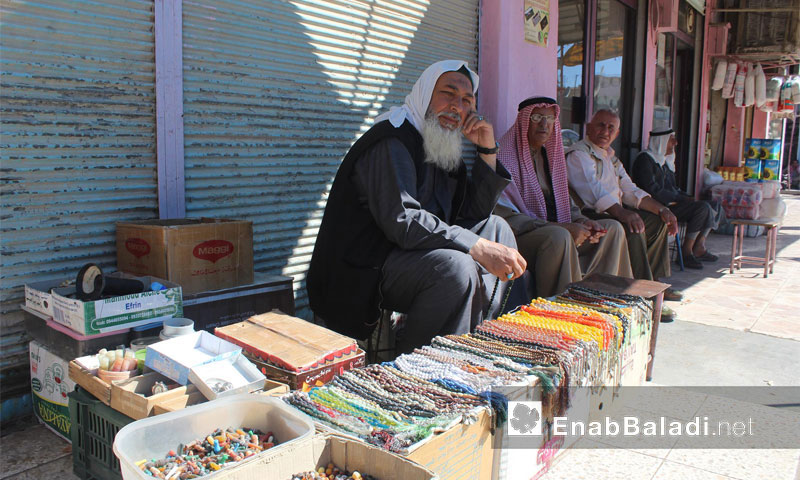
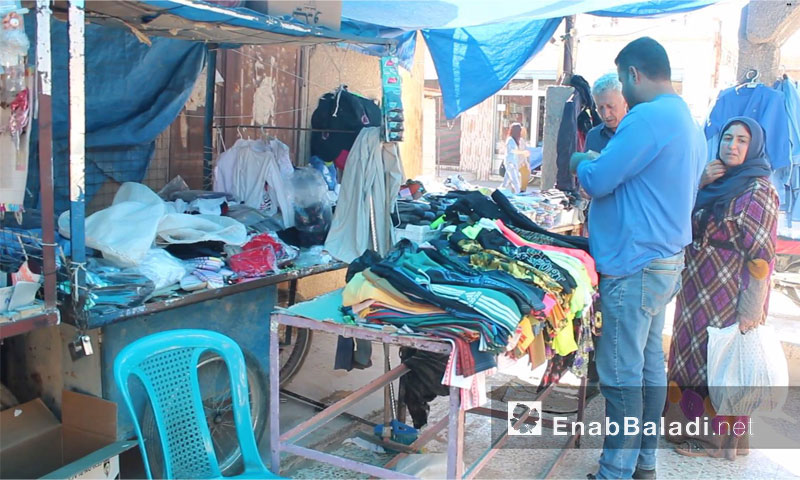
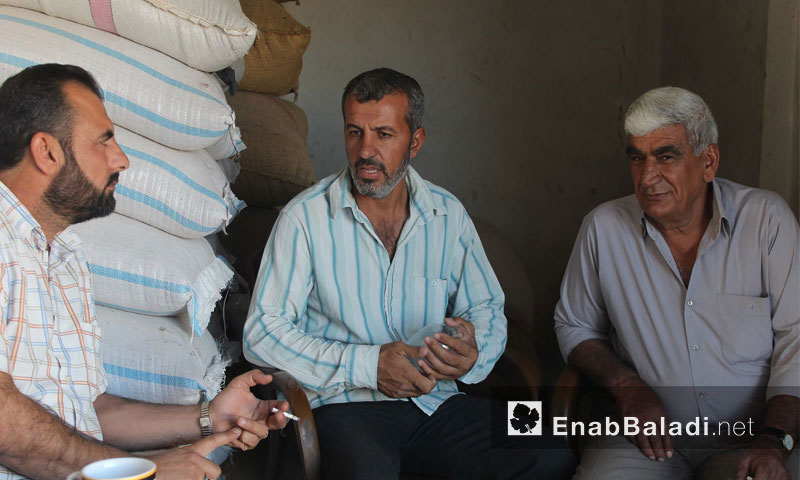





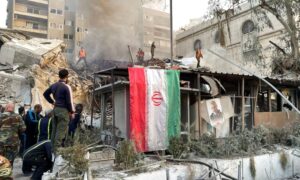

 More In-Depth
More In-Depth